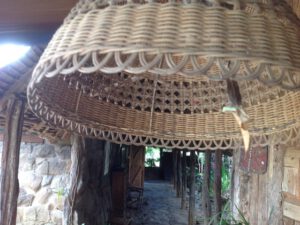Dear Friends,
Despite the illegal livestock challenges and forced invasion into private land and protected area throughout the entire Laikipia region, due to a combination of protracted drought and political expansionism/incitement, we carried out an interim biodiversity survey with the National Museums of Kenya team to see the impact of illegal grazers on the species diversity.
All warned that if there is no government intervention to help curb the illegal grazing, that also affects waters- this situation will permanently impact on the integrity of the ecosystem.
Despite this 19 species were found new to our list!
This included six Birds, twelve Plants,and one Bee!
Here below in the update in photo, and in my words.
Thank you for your support and friendship in easy and tough times!
Kuki
Kuki Gallmann
Ol ari Nyiro
Laikipia Nature Conservancy
On the Great Rift Valley
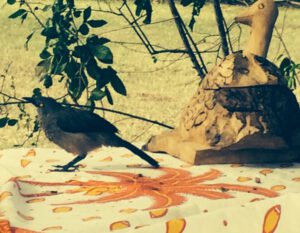 What is going on with the Birds in my Garden?
What is going on with the Birds in my Garden?
What is going on with the Harvesting Ants?
(Fluffs of Lelechwa for their Queen Bed?)
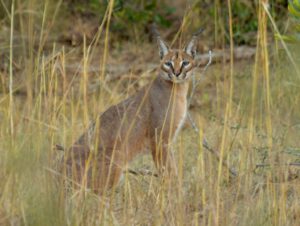 What is going on with the Caracal Lynx?
What is going on with the Caracal Lynx?
 Why are the Elephant Herds coming closer
Why are the Elephant Herds coming closer
– Rumbles and Shuffles below the Stars-
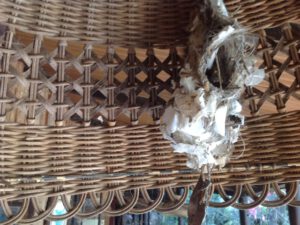 What are the Buffalo Trying to tell Me-
What are the Buffalo Trying to tell Me-
Running at Night through the star-lit Passage
Leopard surprised at the Turn of a Track
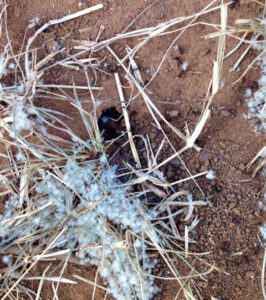 Watch me with crystal unwavering Eyes
Watch me with crystal unwavering Eyes
Flights of White Egrets Silent like Fairies
Storks and Spoonbills Wading through Lakes
This is my World:
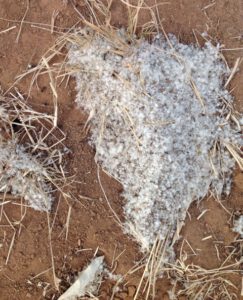 I get Lost in Feathers of Starlings
I get Lost in Feathers of Starlings
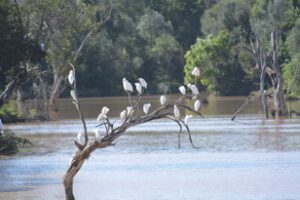 I find Music in the swarming Bees
I find Music in the swarming Bees
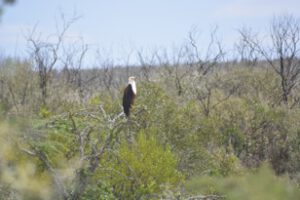 I am grateful for the Bursts of Rain
I am grateful for the Bursts of Rain
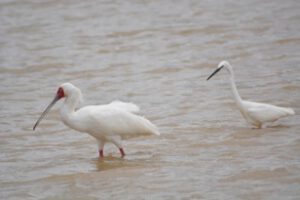 I do not tire of exploring new Worlds
I do not tire of exploring new Worlds
Intricate infinite Labyrinths of Leaves
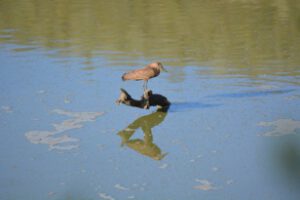 Sunsets Surreal like a Womb of an Oyster
Sunsets Surreal like a Womb of an Oyster
 Hyenas and Jackals serenading the Moon.
Hyenas and Jackals serenading the Moon.
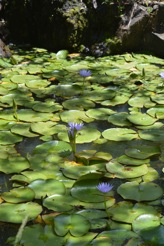 Frogs from the Pond serenading the Stars
Frogs from the Pond serenading the Stars
At Night I wander alone in the Wind
(my Dogs follow)
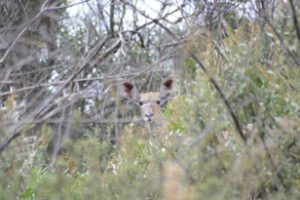 Brown Dogs Eyes infinitely Trusting
Brown Dogs Eyes infinitely Trusting
 Blue Child Eyes Infinitely Wise.
Blue Child Eyes Infinitely Wise.
Drops will drum on the Roof of my Bedroom,
The Dust forgotten
Resilient Nature surviving all Challenges
Everything is Going to be Allright in the End.
Photo credit with thanks
Peter Trevor
Thorburn Cattermole
and mine
Interim Biodiversity Survey with the National Museums of Kenya
SUMMARY
OAN is a Key Biodiversity Area and has a unique combination of habitats and bio-geographical features, ranging from savannah woodland, afro-montane forest pockets, riverine forests, grasslands, wetlands to raised plains and hillsides. All these provide a unique ecosystem that supports a richer biodiversity. A combination of different altitudinal points (Engelesha Hill rises to 2400m while the mouth of the Mukutan Gorge drops to 1260m) and seasonal variations (long rains, short rains and dry season) are reasons for its richness in both flora and fauna. The species documented in OAN from previous studies show that there is more to discover for further documentation. Each taxon at any given visit documents new species for the site, hence enriching the species list.
INSECTS
This survey documented 147 species of invertebrates among which one species of a bee (Hypotrigona sp.) was a new encounter to the existing LNC/OAN invertebrates’ checklist. Some of the rivers still retain their pristine value (attributed to presence of stoneflies and aquatic macroinvertebrates Neoperla cunensis)
3.4.2 Species Composition for Butterflies
A total of 60 species of butterflies comprising of five families (Nymphalidae, Pieridae, Papilionidae, Lycaenidae and Hesperiidae) in that order by species composition were collected over the entire study period. This presents 35% of butterfly species currently in the LNC checklist. Engelesha forest had the highest number of butterfly species (30),
3.4.0 Results and Discussion
…..
Among the documented species, we recorded a stingless bee species (Hypotrigona sp.) which added up as a new species to the existing LNC/OAN invertebrates’ checklist
PLANTS
4.4.1 New records
A total of 12 new species was recorded mainly in Enghelesha Repeater hill with one each for Mlima Kisu and Katinga area. Coincidentally, these species were represented in 11 genera and 6 families (two species per family). These included parasitic shrubs in the family Loranthaceae – Englerina woodfordioides and Oncocalyx sulfureus.


